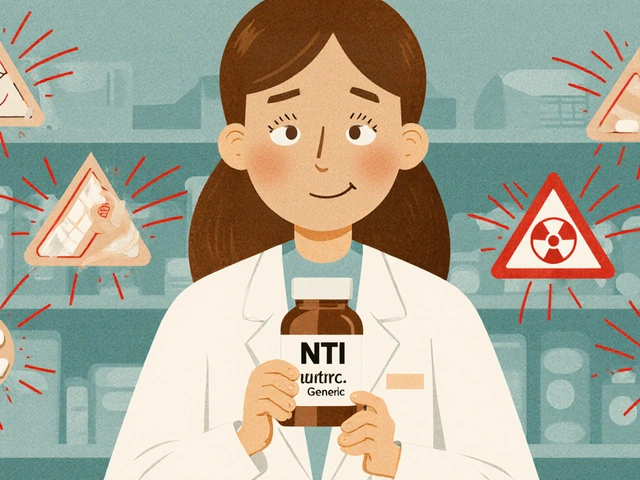Kytril (Granisetron) – What It Is and Why You Might Need It
Kytril is the brand name for granisetron, a medicine that blocks nausea and vomiting caused by chemotherapy, radiation, or surgery. It belongs to a group called 5‑HT3 antagonists, which stop the body’s “vomit signal” before it even starts. If you’ve ever felt sick after a chemo session, Kytril is one of the options doctors use to keep you comfortable.
How to Take Kytril: Dosage and Forms
Kytril comes in a few formats: tablets, an injectable solution, and a patch that sticks to your skin. The most common dosing is 1 mg taken 30 minutes before chemo, either as a tablet or injection. Some patients use the patch, which releases a steady dose over three days and can be easier if you hate needles. Never change the dose on your own—talk to your pharmacist or doctor if you think you need more or less.
When you start Kytril, keep a short diary of how you feel. Note the time you take the medicine, any nausea levels, and any new symptoms. This helps your doctor fine‑tune the schedule and avoid unnecessary side effects.
Common Side Effects and What to Watch For
Most people feel only mild side effects. The usual culprits are constipation, headache, and a feeling of light‑headedness. If constipation becomes a problem, add more fiber, drink plenty of water, and consider a gentle stool softener—always check with your doctor first.
Rare but serious reactions can include a fast heartbeat, fainting, or a severe allergic rash. If you notice any swelling of the face, trouble breathing, or a rash that spreads quickly, seek medical help right away. These reactions are uncommon, but it’s better to be safe.
Because Kytril blocks serotonin receptors, it can sometimes interfere with other meds that affect serotonin, like certain antidepressants. Let your pharmacist know about every prescription and over‑the‑counter drug you take, especially SSRIs or SNRIs.
One practical tip: avoid taking Kytril with strong antacids within three hours of the dose, as they can reduce absorption. If you need an antacid, schedule it either before you take Kytril or wait a few hours afterward.
Saving money on Kytril is possible. In Australia, the PBS (Pharmaceutical Benefits Scheme) often covers part of the cost for eligible patients. Ask your doctor about a PBS prescription, and check if your pharmacy offers a discount card for further savings.
If you’re buying online, only use reputable Aussie pharmacies that require a prescription. Look for a physical address, clear contact details, and a pharmacy registration number. Cheap, shady sites may sell counterfeit pills that can be dangerous.
For those without PBS eligibility, ask your doctor about generic granisetron. While brand‑name Kytril can be pricier, the generic version works the same and can cut the price by half.
Finally, remember that Kytril is just one part of a broader nausea‑control plan. Staying hydrated, eating small bland meals, and using relaxation techniques can boost the drug’s effectiveness. Talk to your care team about a full supportive plan that fits your lifestyle.
Kytril isn’t a one‑size‑fits‑all solution, but when used correctly it can make chemotherapy days far more bearable. Keep track of how you feel, follow dosing instructions, and explore savings options—then you’ll get the most out of this anti‑nausea aid.

Kytril (Granisetron) Guide: Uses, Dosage, Side Effects & Safety Tips
Learn what Kytril is, how it works, proper dosing, common side effects, drug interactions, and safety considerations for patients and caregivers.



